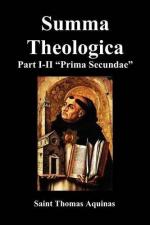The stress they suffered while in Egypt was denoted by the wild lettuces. The figurative reason is evident, because the sacrifice of the paschal lamb signified the sacrifice of Christ according to 1 Cor. 5:7: “Christ our pasch is sacrificed.” The blood of the lamb, which ensured deliverance from the destroyer, by being sprinkled on the ransoms, signified faith in Christ’s Passion, in the hearts and on the lips of the faithful, by which same Passion we are delivered from sin and death, according to 1 Pet. 1:18: “You were . . . redeemed . . . with the precious blood . . . of a lamb unspotted.” The partaking of its flesh signified the eating of Christ’s body in the Sacrament; and the flesh was roasted at the fire to signify Christ’s Passion or charity. And it was eaten with unleavened bread to signify the blameless life of the faithful who partake of Christ’s body, according to 1 Cor. 5:8: “Let us feast . . . with the unleavened bread of sincerity and truth.” The wild lettuces were added to denote repentance for sins, which is required of those who receive the body of Christ. Their loins were girt in sign of chastity: and the shoes of their feet are the examples of our dead ancestors. The staves they were to hold in their hands denoted pastoral authority: and it was commanded that the paschal lamb should be eaten in one house, i.e. in a catholic church, and not in the conventicles of heretics.
Reply Obj. 3: Some of the sacraments of the New Law had corresponding figurative sacraments in the Old Law. For Baptism, which is the sacrament of Faith, corresponds to circumcision. Hence it is written (Col. 2:11, 12): “You are circumcised . . . in the circumcision of” Our Lord Jesus “Christ: buried with Him in Baptism.” In the New Law the sacrament of the Eucharist corresponds to the banquet of the paschal lamb. The sacrament of Penance in the New Law corresponds to all the purifications of the Old Law. The sacrament of Orders corresponds to the consecration of the pontiff and of the priests. To the sacrament of Confirmation, which is the sacrament of the fulness of grace, there would be no corresponding sacrament of the Old Law, because the time of fulness had not yet come, since “the Law brought no man [Vulg.: ‘nothing’] to perfection” (Heb. 7:19). The same applies to the sacrament of Extreme Unction, which is an immediate preparation




